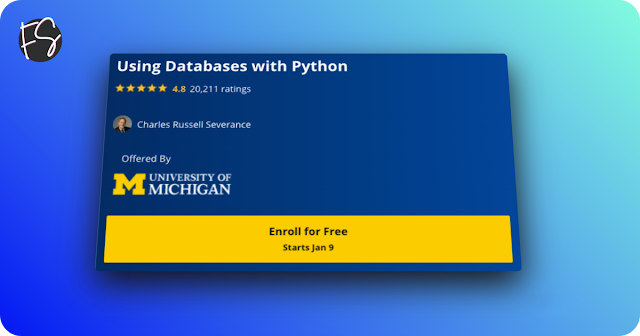Using Databases with Python
This course will introduce students to the basics of the Structured Query Language (SQL) as well as basic database design for storing data as part of a multi-step data gathering, analysis, and processing effort. The course will use SQLite3 as its database. We will also build web crawlers and multi-step data gathering and visualization processes. We will use the D3.js library to do basic data visualization. This course will cover Chapters 14-15 of the book “Python for Everybody”. To succeed in this course, you should be familiar with the material covered in Chapters 1-13 of the textbook and the first three courses in this specialization. This course covers Python 3.
WHAT YOU WILL LEARN
- Use the Create, Read, Update, and Delete operations to manage databases
- Explain the basics of Object Oriented Python
- Understand how data is stored across multiple tables in a database
- Utilize the Google Maps API to visualize data
SKILLS YOU WILL GAIN
- Python Programming
- Database (DBMS)
- SQLite
- SQL
Syllabus - What you will learn from this course
Object Oriented Python
To start this class out we cover the basics of Object Oriented Python. We won't be writing our own objects, but since many of the things we use like BeautifulSoup, strings, dictionaries, database connections all use Object Oriented (OO) patterns we should at least understand some of its patterns and terminology.
Basic Structured Query Language
We learn the four core CRUD operations (Create, Read, Update, and Delete) to manage data stored in a database.
Data Models and Relational SQL
In this section we learn about how data is stored across multiple tables in a database and how rows are linked (i.e., we establish relationships) in the database.
Many-to-Many Relationships in SQL
In this section we explore how to model situations like students enrolling in courses where each course has many students and each student is enrolled in many courses.
Databases and Visualization
In this section, we put it all together, retrieve and process some data and then use the Google Maps API to visualize our data.
Click on Audit after clicking 'Enroll for Free'
Other Courses in Continuation:
Capstone: Retrieving, Processing, and Visualizing Data with Python

Comments